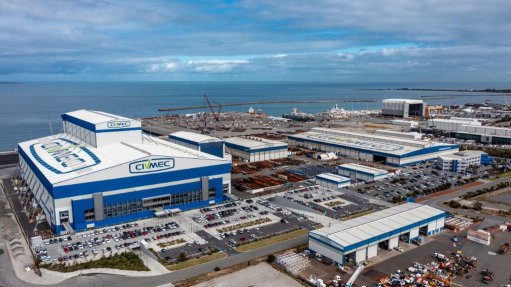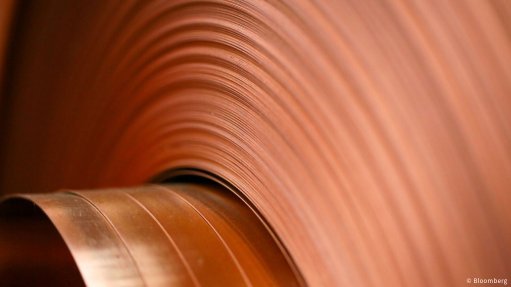Enhancing gold cyanidation with Aachen high shear technology
Gold, coveted for its rarity and enduring value, has been a subject of fascination and desire throughout human history. The quest for extracting gold from its ores has led to numerous innovations in mining and metallurgy. One such innovation is the use of oxygen in gold extraction, particularly in the well-known process of gold cyanidation.
Cyanidation has been the cornerstone of gold recovery for over a century, but it is not without its challenges. In recent years, Aachen high shear technology has emerged as a transformative solution, significantly improving this robust process and enhancing gold recovery.
The role of oxidation and oxygenation in gold cyanidation circuits is of paramount importance in the extraction of gold from its ores. This process depends on the chemical reactions between gold, cyanide, sulphide minerals and oxygen to dissolve and recover gold from low-grade and high-grade ores.
Oxygenation of the Leach Slurry
To enable the oxidation of gold and other associated reactions, a steady supply of oxygen to the leach slurry is crucial. Oxygenation serves several critical roles in the gold cyanidation circuit, including:
a. Gold dissolution: Oxygen plays a key role in the dissolution of gold by providing the necessary oxygen molecules for the chemical reactions. It promotes the formation of soluble gold cyanide complexes, allowing gold to go into solution. If insufficiently available, it can bottleneck this process.
b. Reaction kinetics: The presence of oxygen accelerates the kinetics of the gold-cyanide reaction, making the process more efficient. Faster reaction rates mean shorter leaching times and, consequently, faster gold recovery. It thus enables throughput increases.
c. Reagent consumption: The use of oxygen in a pre-oxidation step before cyanide addition can reduce cyanide consumption by oxidising the cyanide consuming species like sulphides.
d. Maintenance of redox potential: Oxygen helps maintain the appropriate redox potential in the leach slurry. Controlled redox potential is necessary to ensure the selective dissolution of gold and the prevention of undesirable side reactions or the passivation of gold surfaces.
Oxygenation Methods
There are various methods to introduce and maintain oxygen in the cyanidation circuit, including mechanical agitation, sparging, or the use of specialised oxygenation equipment. The choice of method depends on the specific requirements of the process, the ore type and the overall design of the circuit.
Reaction rates and shear element: The speed at which reactions occur, whether involving the sulphide matrix or the gold itself, depends largely on diffusion across the boundary layer between the solid surface and the surrounding liquid phase. In this context, reactants like oxygen and cyanide need to move toward the solid surface, while products like aurodicyanide and sulphide reaction products move away. The thickness of this boundary layer is inversely related to shear. Therefore, agitation or kinetic energy input plays a crucial role in reducing the boundary layer's thickness, thereby speeding up reaction rates. The Aachen™ high-shear reactor was initially designed with shear in mind to facilitate efficient gas transfer from the gas to the liquid phase. This high-shear environment enhances solution/solid interface reactions and accelerates reaction rates, which are usually slower in low-shear conditions.
Aachen High Shear Technology
An Aachen high shear reactor is a specialised piece of equipment used in hydrometallurgical processes, particularly in mineral processing and metal extraction applications. This reactor is designed to enhance gas mass transfer and reaction kinetics in the treatment of ores and concentrates. Its key feature is the generation of intense shear forces within the reactor vessel, which facilitates efficient mixing and dispersion of reactants, such as ore slurry, reagents and gases like oxygen. The high-shear environment created by this technology promotes faster and more effective chemical reactions, ultimately improving the efficiency of various metallurgical processes, including gold cyanidation.
Originally designed to facilitate efficient high-level oxygen mass transfer from the gas phase to the liquid phase in the treatment of refractory gold ores, the Aachen™ high shear reactor has expanded its reach into various applications where substantial process optimisation is a mandate. With the depletion of easily processable gold reserves, remaining ores come with their own set of complications including cyanidable gold losses, slow leach kinetics, and high reagent consumption. The relentless quest for higher throughput, driven by declining gold grades, has only intensified these challenges.
The Maelgwyn Aachen™ technology has successfully tackled these issues in a range of gold mining applications. With more than 70 units installed and operating across the African continent, the technology has a proven track record in the mining industry. In addition to its original application in treating refractory flotation concentrate, it has gained significant traction in oxide and transitional cyanidation circuits as well as tailings retreatment.
The use of oxygen in gold cyanidation has been a cornerstone of gold extraction for over a century. With the advent of Aachen high shear technology, this tried-and-true method has been significantly enhanced. The precise and efficient oxygen transfer achieved by this technology not only accelerates gold dissolution but also promotes more sustainable mining practices. As the gold mining industry continues to evolve, innovations like Aachen high shear technology will play a pivotal role in making gold extraction more efficient, economically viable, and environmentally responsible. This breath of fresh air, in the form of enhanced oxygen utilisation, marks a promising future for the gold extraction industry. And while these goals have been reached, further developments are progressing to propel the technology to new heights.
By Juan van der Merwe, General Manager of Maelgwyn Mineral Services Africa
Article Enquiry
Email Article
Save Article
Feedback
To advertise email advertising@creamermedia.co.za or click here
Press Office
Announcements
What's On
Subscribe to improve your user experience...
Option 1 (equivalent of R125 a month):
Receive a weekly copy of Creamer Media's Engineering News & Mining Weekly magazine
(print copy for those in South Africa and e-magazine for those outside of South Africa)
Receive daily email newsletters
Access to full search results
Access archive of magazine back copies
Access to Projects in Progress
Access to ONE Research Report of your choice in PDF format
Option 2 (equivalent of R375 a month):
All benefits from Option 1
PLUS
Access to Creamer Media's Research Channel Africa for ALL Research Reports, in PDF format, on various industrial and mining sectors
including Electricity; Water; Energy Transition; Hydrogen; Roads, Rail and Ports; Coal; Gold; Platinum; Battery Metals; etc.
Already a subscriber?
Forgotten your password?
Receive weekly copy of Creamer Media's Engineering News & Mining Weekly magazine (print copy for those in South Africa and e-magazine for those outside of South Africa)
➕
Recieve daily email newsletters
➕
Access to full search results
➕
Access archive of magazine back copies
➕
Access to Projects in Progress
➕
Access to ONE Research Report of your choice in PDF format
RESEARCH CHANNEL AFRICA
R4500 (equivalent of R375 a month)
SUBSCRIBEAll benefits from Option 1
➕
Access to Creamer Media's Research Channel Africa for ALL Research Reports on various industrial and mining sectors, in PDF format, including on:
Electricity
➕
Water
➕
Energy Transition
➕
Hydrogen
➕
Roads, Rail and Ports
➕
Coal
➕
Gold
➕
Platinum
➕
Battery Metals
➕
etc.
Receive all benefits from Option 1 or Option 2 delivered to numerous people at your company
➕
Multiple User names and Passwords for simultaneous log-ins
➕
Intranet integration access to all in your organisation



















